
The group designates June and December each year as Environmental Awareness Months, during which various energy-saving and carbon reduction policies are promoted to employees. Specific annual electricity-saving targets are set to manage each production base, track emission reduction results, and disclose the progress on the company’s website. ISO 14064-1 greenhouse gas inventory is conducted, with third-party verification by SGS and BSI.
Base Year and Data
The original base year was 2022, with emissions of 223,052.64 ton of CO2e. However, due to changes in operational activities following the lifting of pandemic restrictions and the impact of the overall economic downturn, the base year was adjusted to 2023, with emissions of 164,157.27 ton of CO2e.
Emission Reduction Target
The 2024 emission reduction target is an overall 1% reduction across all companies, with medium-term targets (2025–2030) of a 3% annual reduction at the main site VPIC1 in Vietnam and 2% at Eurocharm TW, and long-term targets (2031–2050) of a 5% annual reduction at VPIC1 and 3% at Eurocharm.
Strategy and Specific Action Plans
- The parent company and its subsidiaries have implemented ISO 14064-1 for greenhouse gas (GHG) inventory and obtained third-party verification, with annual inventories conducted on an ongoing basis.
- The main sites—VPIC1 in Vietnam and Eurocharm in Taiwan—have adopted the ISO 50001 energy management system, also with third-party verification, and continue to implement annual energy-saving and carbon-reduction action plans.
- In response to the EU ETS reporting requirements under the EU CBAM, VPIC1 in Vietnam is implementing ISO 14067 for product carbon footprint accounting and will proceed with verification once official guidelines are released.
- VPIC1 is currently assessing the feasibility of installing solar panels or purchasing green electricity to gradually move toward net-zero emissions.
- According to Vietnam’s Decree No. 06/2022/NĐ-CP on GHG management, from 2025 onward, VPIC1 will submit a third-party verified GHG inventory report to the Vietnamese government every two years, and by the end of 2025, will present a carbon reduction plan for 2026–2030. VPIC1 plans to adopt ISO 14068 in mid-2025 to develop this reduction plan and, starting in 2027, submit annually verified emission reduction results. The company is committed to continuously refining climate targets and indicators to enhance resilience and drive industry transformation.
Progress Toward Emission Reduction Targets
In 2024, Eurocharm TW’s total emissions decreased by 141.087 ton of CO2e compared to 2023, representing a 36% reduction. In contrast, VPIC1 in Vietnam saw an increase of 26,333.77 ton of CO2e, or 16%, primarily due to the addition of a new electroplating line starting in June 2024, which contributed 534.09 ton of CO2e.
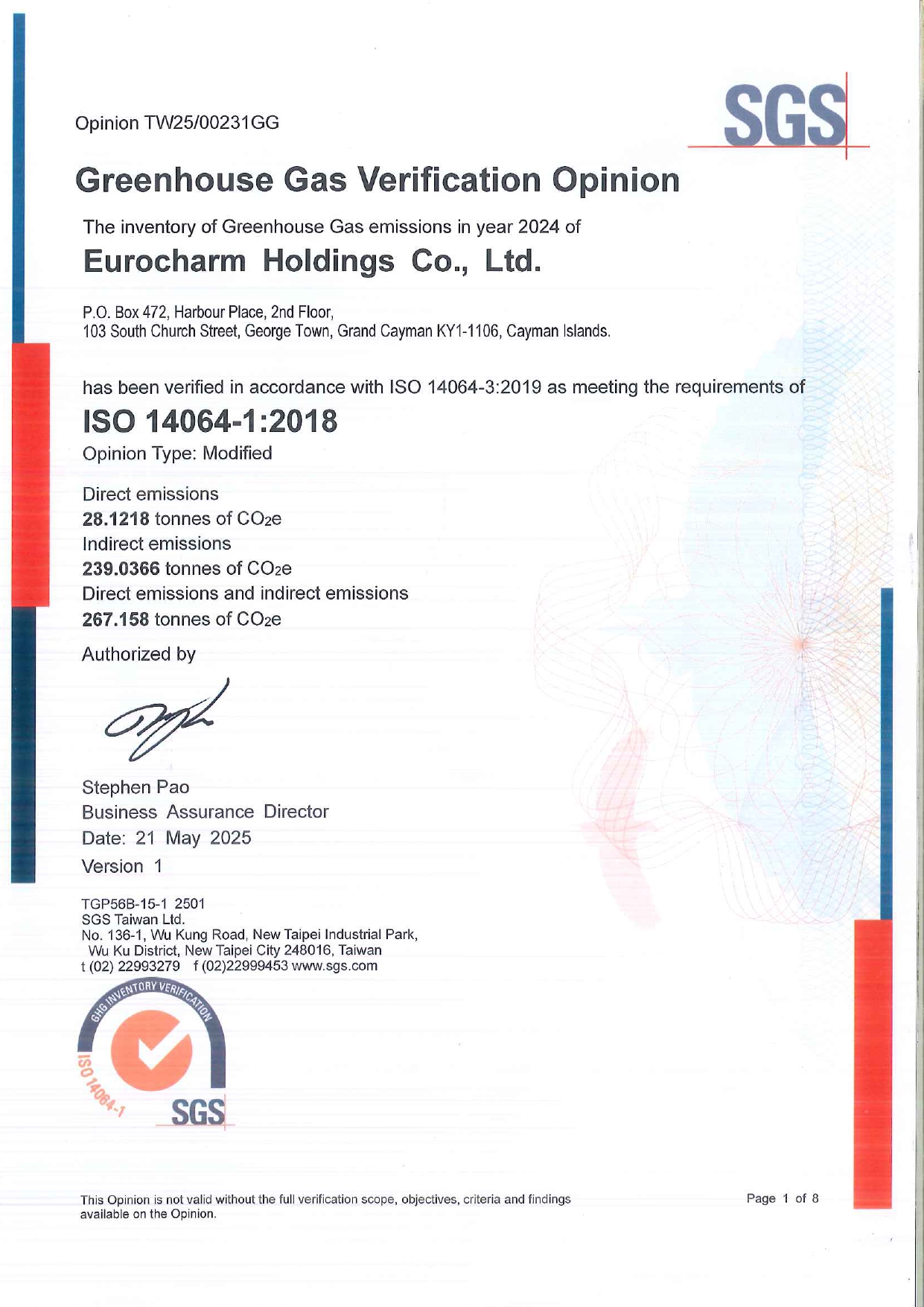
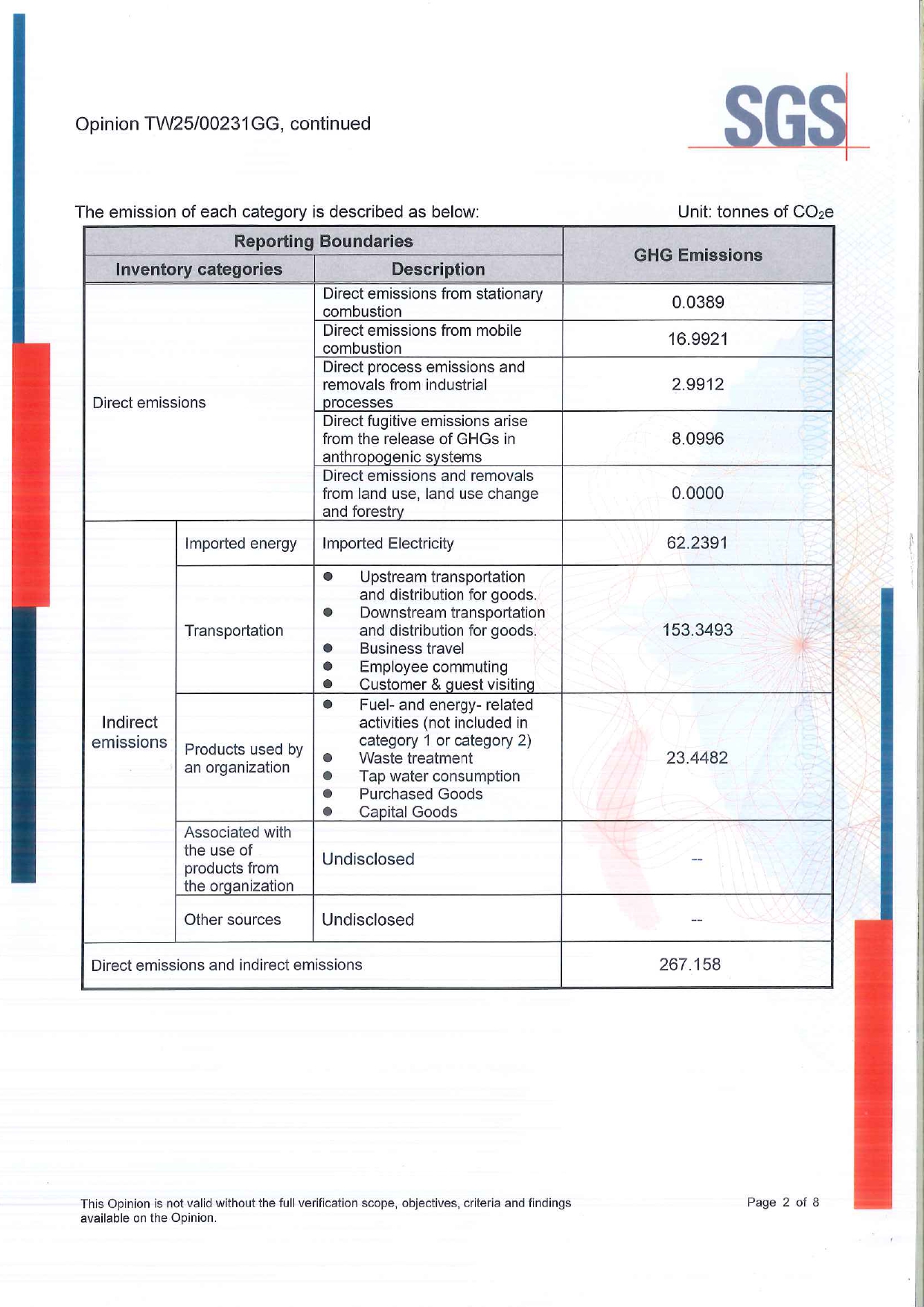
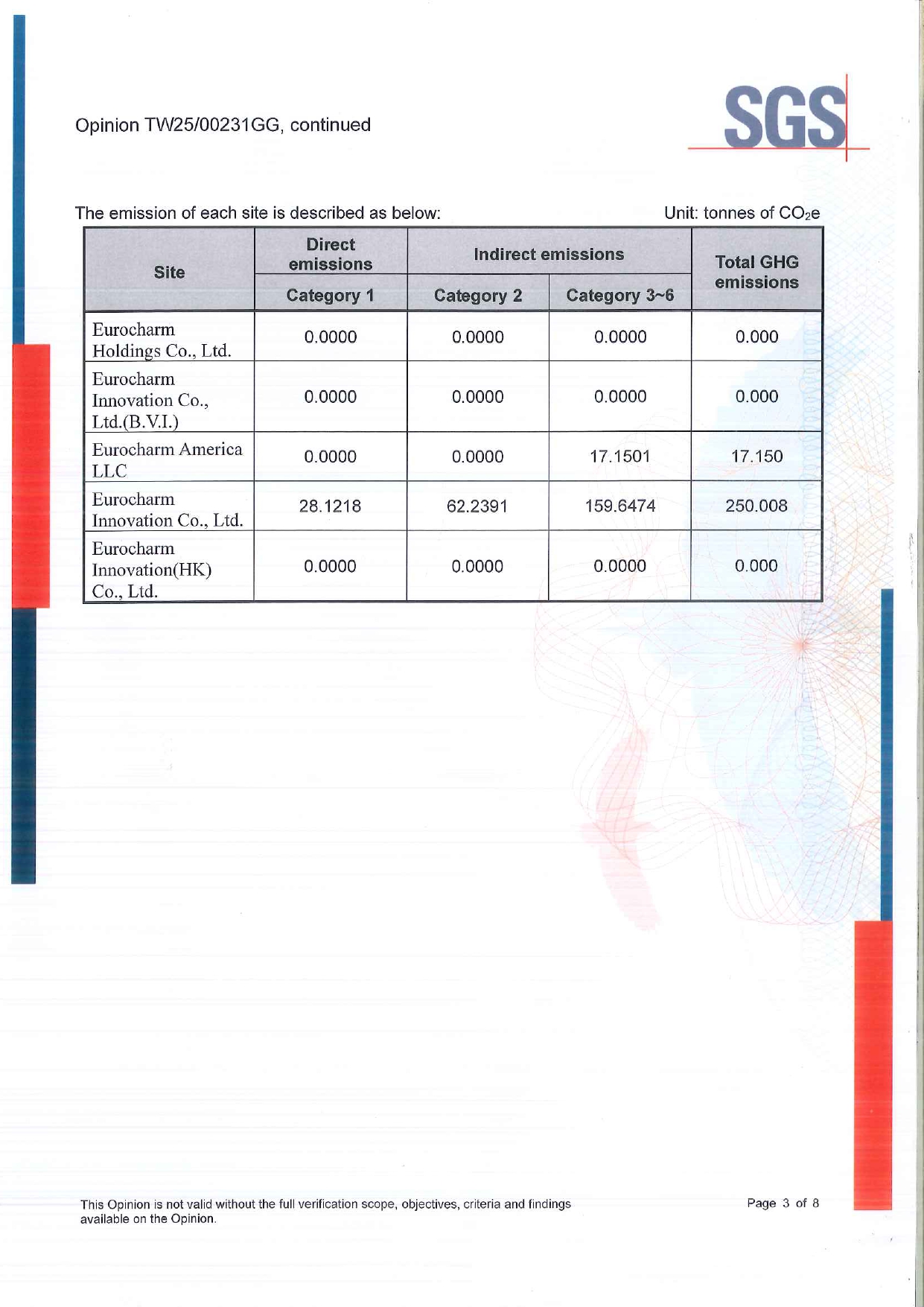
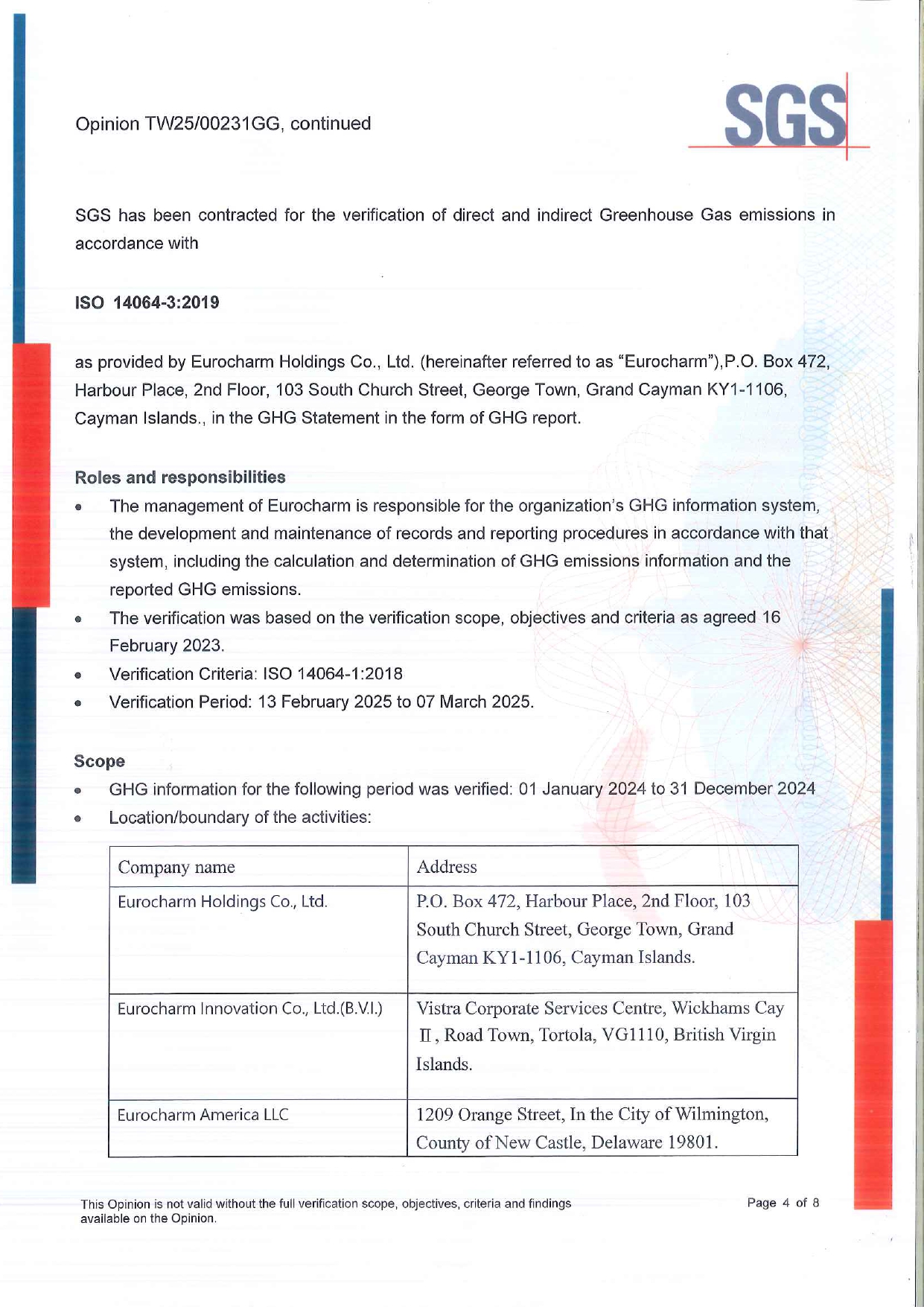
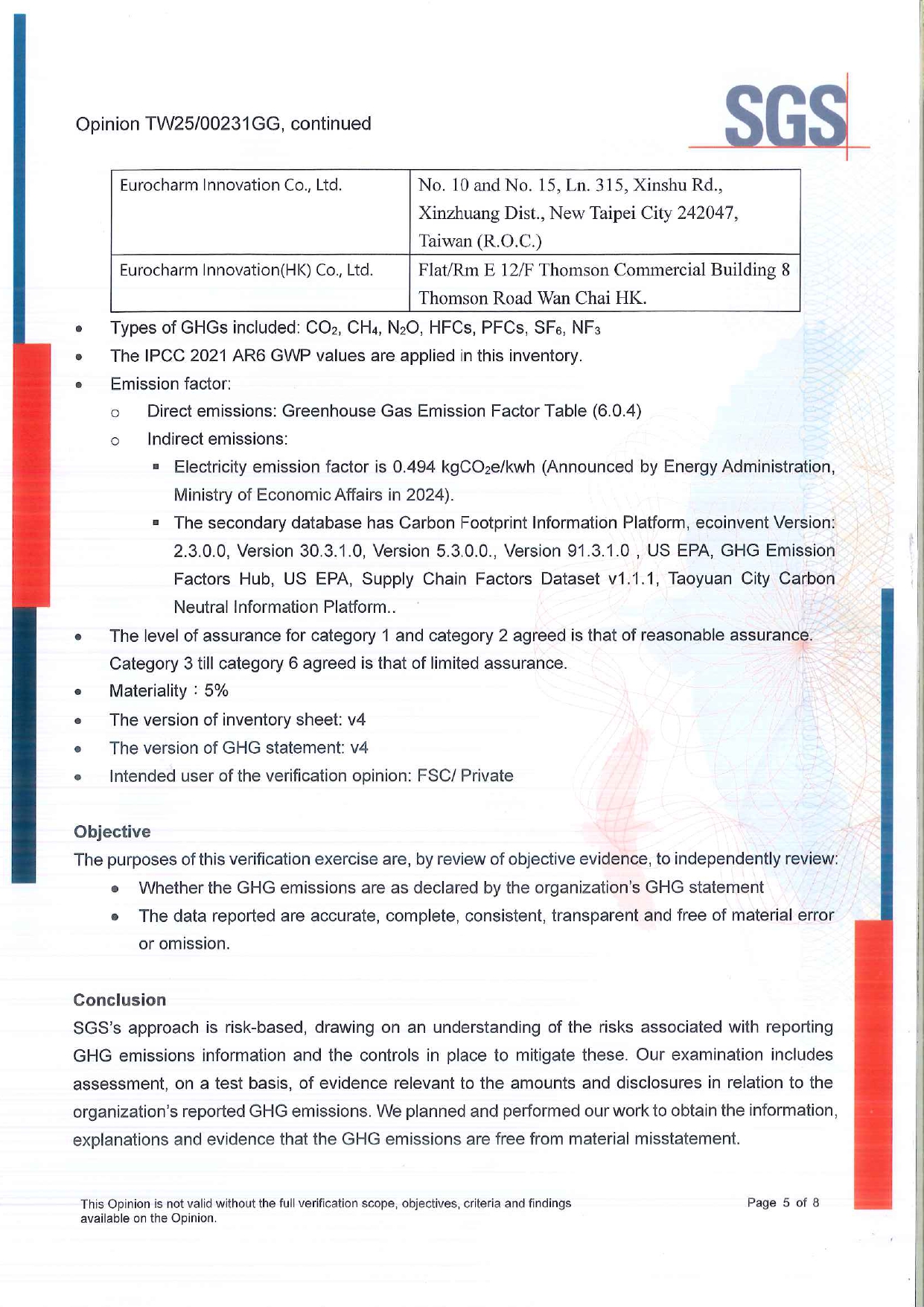
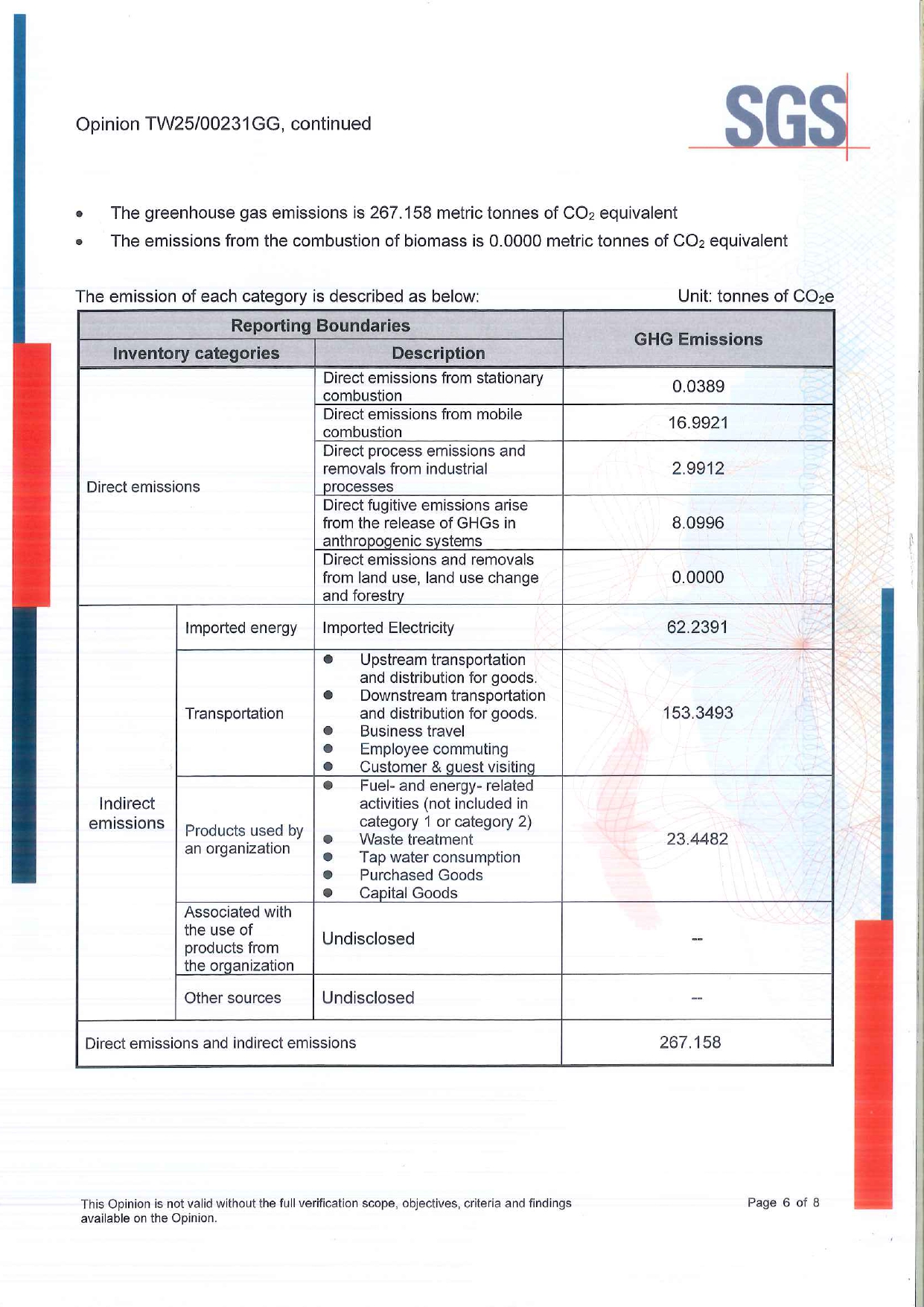
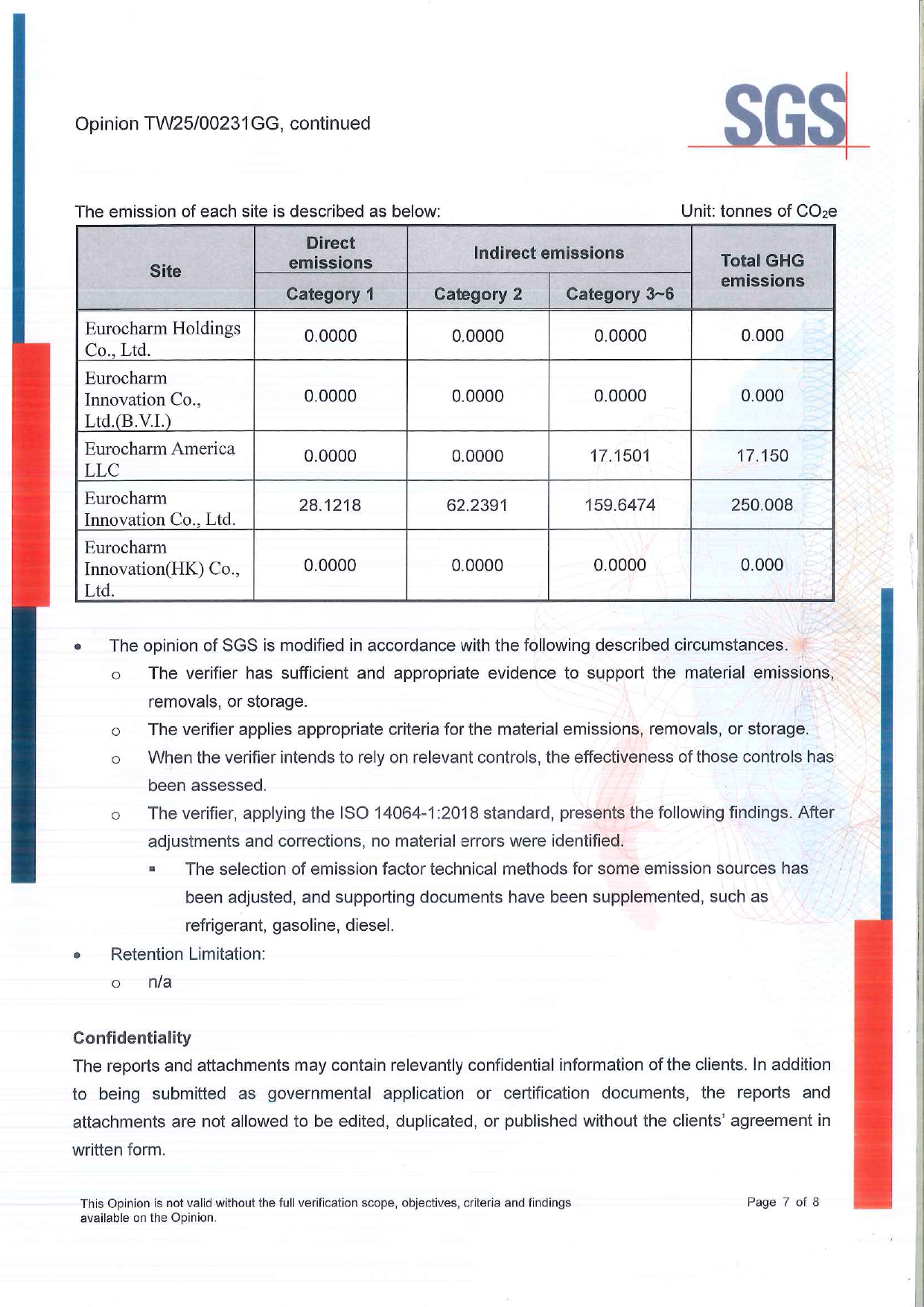
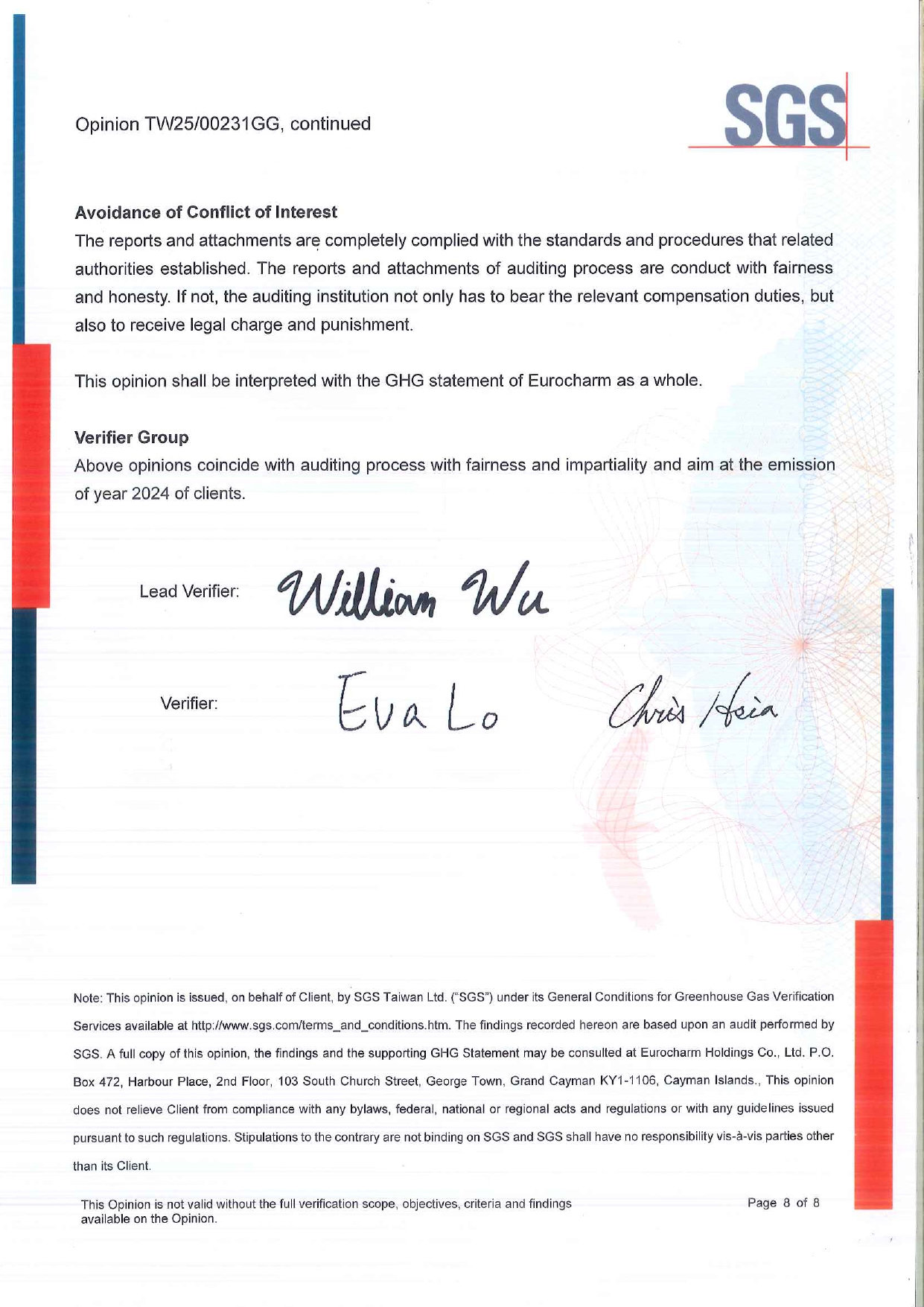
Eurocharm Holdings, BVI, Eurocharm US, Eurocharm TW and Eurocharm HK
VPIC1
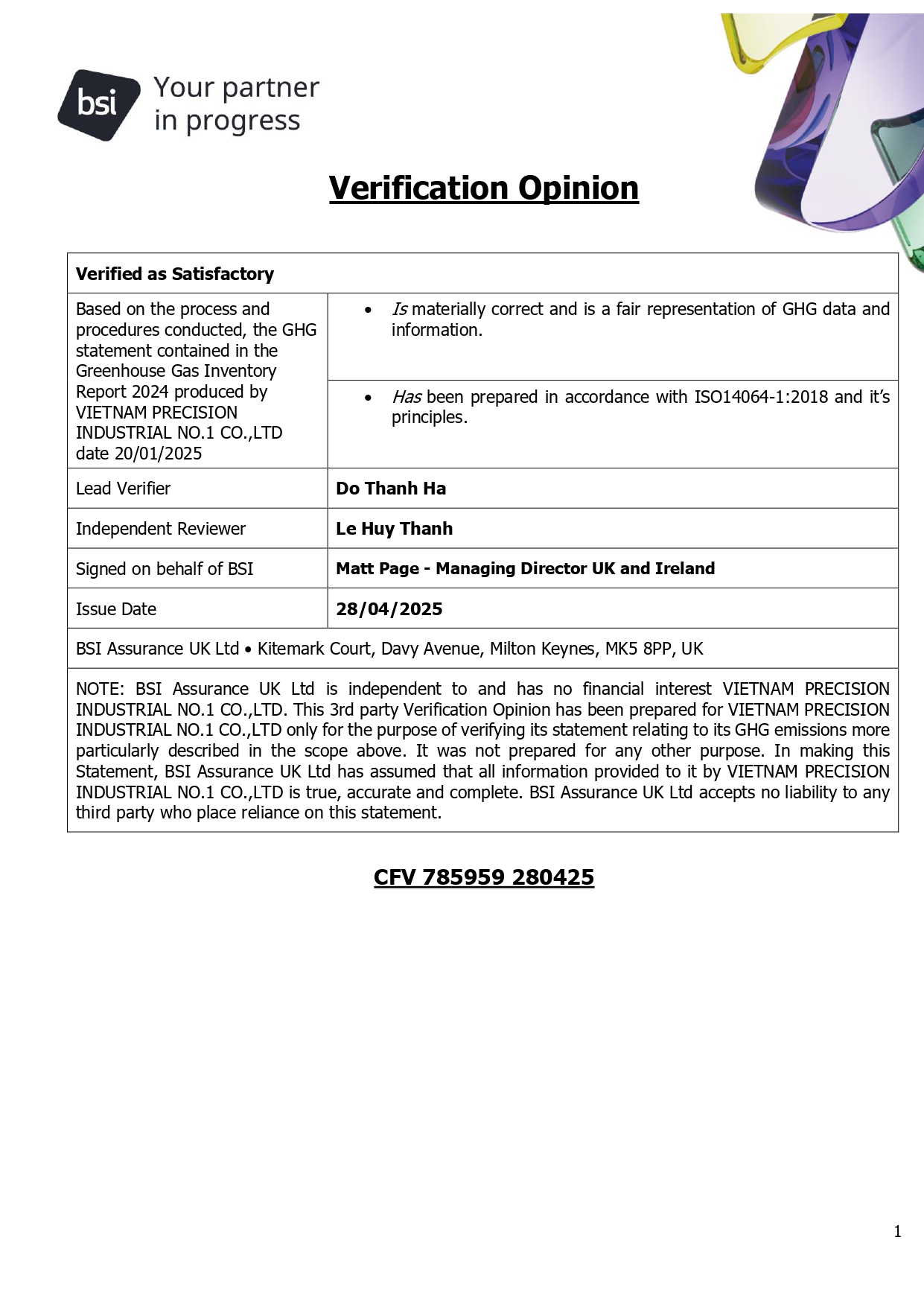
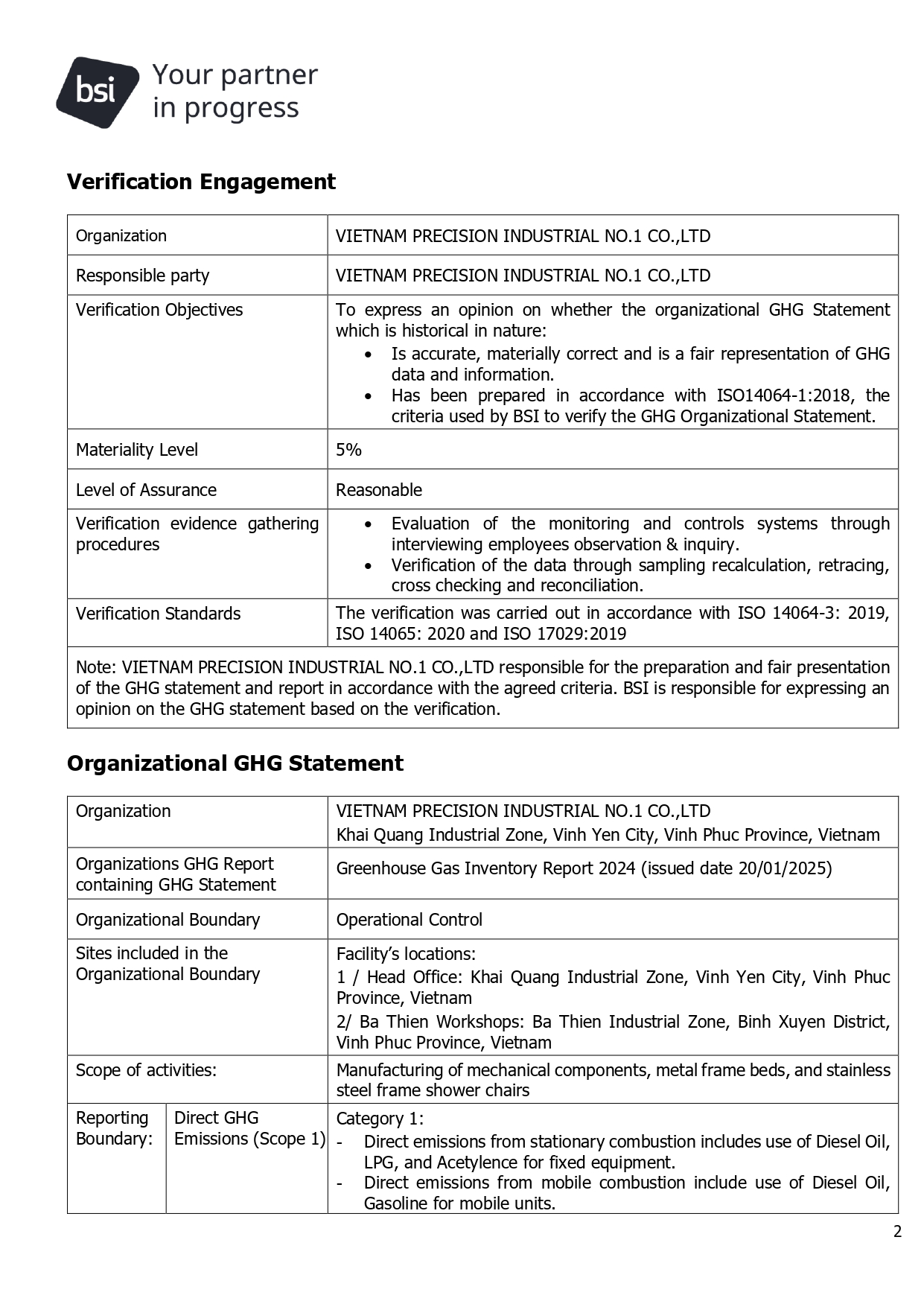
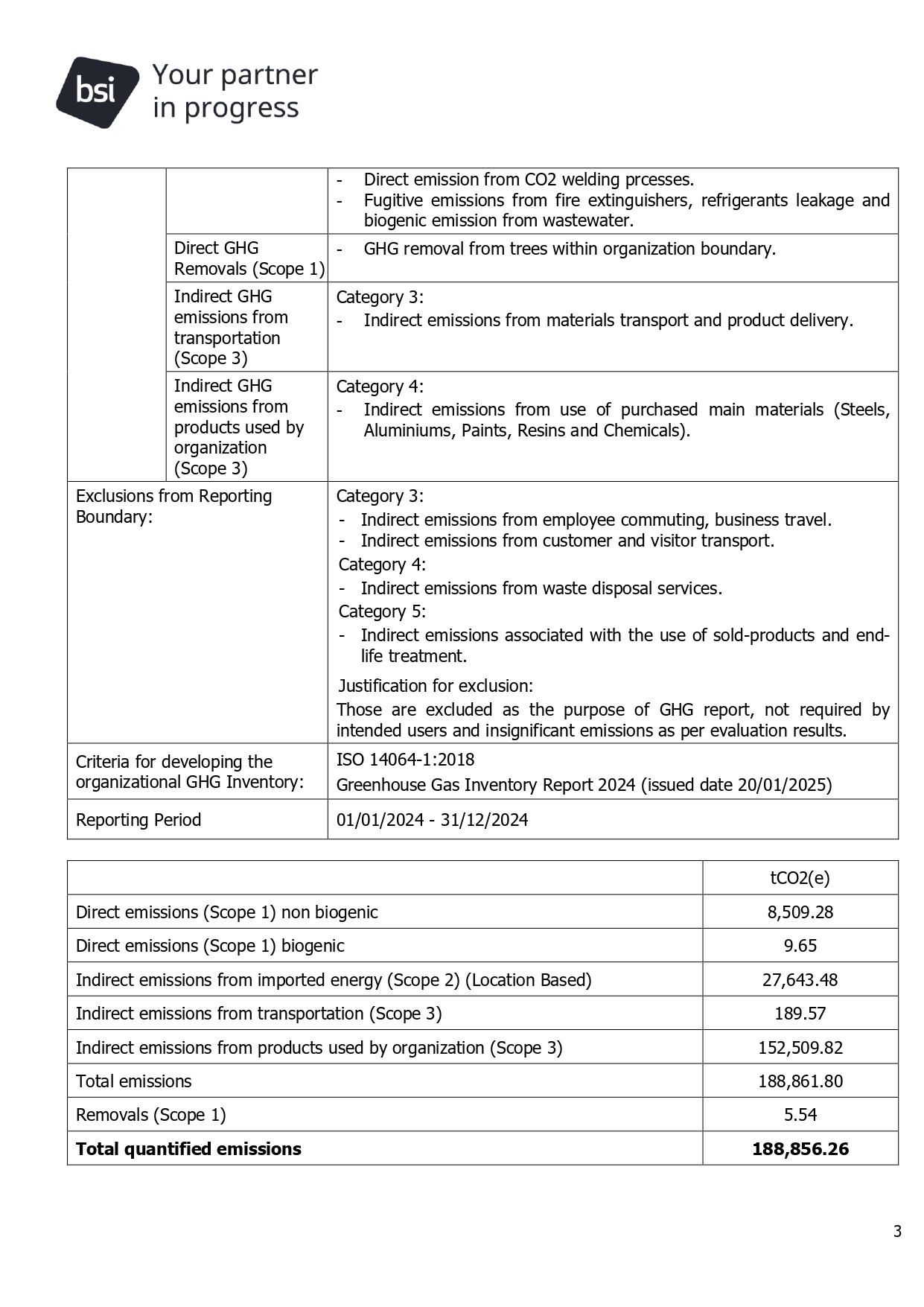
2024 GHG Emission
| Scope | Unit | Taiwan | United States | Vietnam |
|---|---|---|---|---|
| Scope1 | Ton CO2e | 28.1218 | 0 | 8,513.39 |
| Scope2 | Ton CO2e | 62.2391 | 0 | 27,643.48 |
| Scope3 | Ton CO2e | 159.6475 | 17.1501 | 152,699.39 |
| Total | Ton CO2e | 250.008 | 17.150 | 188,856.26 |
2023 GHG Emission
| Scope | Unit | Taiwan | United States | Vietnam |
|---|---|---|---|---|
| Scope1 | Ton CO2e | 64.9665 | 0 | 9,530.80 |
| Scope2 | Ton CO2e | 115.3931 | 0 | 28,000.49 |
| Scope3 | Ton CO2e | 210.7362 | 17.8103 | 124,996.74 |
| Total | Ton CO2e | 391.096 | 17.810 | 162,528.03 |
2022 GHG Emission
| Scope | Unit | Taiwan | United States | Vietnam |
|---|---|---|---|---|
| Scope 1 | Ton CO2e | 56.5625 | 0 | 10,769.62 |
| Scope 2 | Ton CO2e | 126.4666 | 0 | 38,306.46 |
| Scope 3 | Ton CO2e | 278.9627 | 8.2896 | 173,506.29 |
| Total | Ton CO2e | 461.992 | 8.290 | 222,582.36 |
2024 GHG Emission Density
| Item | Unit | Taiwan | United States | Vietnam |
|---|---|---|---|---|
| GHG Emission Density Scope 1 | Ton CO2e /production volume | 0.00 | 0.00 | 0.00 |
| GHG Emission Density Scope 1 | Ton CO2e/revenue in million NTD | 0.00 | 0.00 | 1.17 |
| GHG Emission Density Scope 2 | Ton CO2e /production volume | 0.00 | 0.00 | 0.00 |
| GHG Emission Density Scope 2 | Ton CO2e/revenue in million NTD | 0.01 | 0.00 | 3.80 |
| GHG Emission Density Scope 3 | Ton CO2e /production volume | 0.00 | 0.00 | 0.00 |
| GHG Emission Density Scope 3 | Ton CO2e/revenue in million NTD | 0.02 | 0.00 | 20.97 |
2023 GHG Emission Density
| Item | Unit | Taiwan | United States | Vietnam |
|---|---|---|---|---|
| GHG Emission Density Scope 1 | Ton CO2e /production volume | 0.00 | 0.00 | 0.00 |
| GHG Emission Density Scope 1 | Ton CO2e/revenue in million NTD | 0.01 | 0.00 | 1.29 |
| GHG Emission Density Scope 2 | Ton CO2e /production volume | 0.00 | 0.00 | 0.00 |
| GHG Emission Density Scope 2 | Ton CO2e/revenue in million NTD | 0.02 | 0.00 | 3.85 |
| GHG Emission Density Scope 3 | Ton CO2e /production volume | 0.00 | 0.00 | 0.00 |
| GHG Emission Density Scope 3 | Ton CO2e/revenue in million NTD | 0.03 | 0.00 | 17.20 |
2022 GHG Emission Density
| Item | Unit | Taiwan | United States | Vietnam |
|---|---|---|---|---|
| GHG Emission Density Scope 1 | Ton CO2e /production volume | 0.00 | 0.00 | 0.00 |
| GHG Emission Density Scope 1 | Ton CO2e/revenue in million NTD | 0.01 | 0.00 | 1.34 |
| GHG Emission Density Scope 2 | Ton CO2e /production volume | 0.00 | 0.00 | 0.00 |
| GHG Emission Density Scope 2 | Ton CO2e/revenue in million NTD | 0.02 | 0.00 | 4.77 |
| GHG Emission Density Scope 3 | Ton CO2e /production volume | 0.00 | 0.00 | 0.00 |
| GHG Emission Density Scope 3 | Ton CO2e/revenue in million NTD | 0.03 | 0.00 | 21.59 |
Product Design Optimization Action Plans
| Before DFM | After DFM |
For the customer’s part number 5273904, with an annual production volume of 9,325 pcs, 6 sets of molds (approximately 29 tons) are required. It uses 6 sets of 600-ton stamping equipment, consuming 651 kWh per hour, totaling 58,590 kWh per year. The electricity consumption results in 42.31 tons of CO2e per year. The mold manufacturing process generates 71,749 tons of CO2e. | For the customer’s part number 5273904, with an annual production volume of 9,325 pcs, 4 sets of molds (approximately 20 tons) are now required. It uses 4 sets of 600-ton stamping equipment, consuming 343 kWh per hour, totaling 39,060 kWh per year. The electricity consumption results in 28.2 tons of CO2e per year. The mold manufacturing process generates 49,566 tons of CO2e. In total, the improvements reduce carbon emissions by 22,197.11 tons of CO2e.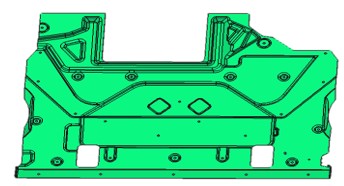 |
| Before DFM | After DFM |
The part has many different radii in the curved corners, with an annual production volume of 396,000 pcs, requiring a total of 4 sets of molds (weighing approximately 0.4 tons). It uses 4 sets of 6CNC-38 equipment, consuming 65.8 kWh per hour, totaling 164,236.8 kWh per year. This results in an electricity consumption of 118.6 tons of CO2e per year, with the mold manufacturing process generating 0.98 tons of CO2e per year. | The part has a uniform radius size of R31.75, with an annual production volume of 396,000 pcs. It now requires a total of 2 sets of molds (weighing approximately 0.2 tons). The production uses 2 sets of 6CNC-38 equipment, consuming 32.9 kWh per hour, totaling 82,118.4 kWh per year. This results in an electricity consumption of 59.3 tons of CO2e per year, with the mold manufacturing process generating 0.49 tons of CO2e. The total reduction in CO2e is 59.79 tons.  |
| Before DFM | After DFM |
The part 50101-HR3-A200-H1 originally required six processing steps (Material Receiving → Warehousing → Part Cutting → Bending → Laser Cutting → Punching Arc R Corner). With an annual production volume of 20,700 pcs, the total carbon emissions for the six steps amount to 5.52 tons of CO2e per year. | The part 50101-HR3-A200-H1 now requires only five processing steps (Material Receiving → Warehousing → Laser Cutting → Bending → Punching Arc R Corner). With an annual production volume of 20,700 pcs, the total carbon emissions for the five steps are reduced to 5.16 tons of CO2e per year, achieving a reduction of 0.36 tons of CO2e annually. |
| Before DFM | After DFM |
The part 850610-1411 is made of AL A6063S, a material with poor mechanical strength. With an annual production volume of 10,200 units, and each requiring 11 components for assembly, 9,350 parts need to be produced per month to meet assembly needs. The laser machine consumes 10.8 kWh per hour, totaling 1,944 kWh annually, which results in 1.41 tons of CO₂e emissions per year from electricity consumption.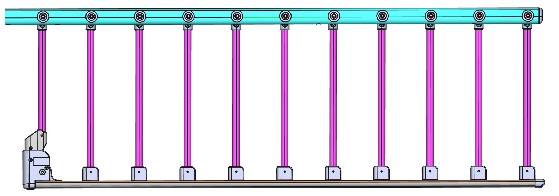 | After changing the material of part 850610-1411 to STKM11A, the annual production remains at 10,200 units, with each unit now requiring only 7 components for assembly. As a result, 5,950 parts need to be produced per month. The laser machine consumes 10.8 kWh per hour, totaling 1,244 kWh annually, which results in 0.91 tons of CO₂e emissions per year. This change achieves a reduction of 0.5 tons of CO₂e annually. 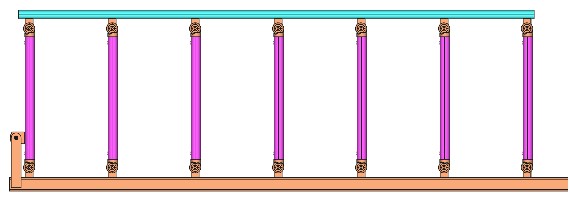 |
Process Optimization Action Plan
| Before DFM | After DFM |
| For the production of parts 1263463-8 and 1263463-9, with an annual output of 300 pieces, a total of two machines are required. The annual electricity consumption is 3,906 kWh, resulting in 2.8 tons of CO₂e emissions per year. | In order to reduce power consumption without impacting the environment, the development team improved the process to save both manpower and electricity. For the production of parts 1263463-8 and 1263463-9, with an annual output of 300 pieces, only one machine is now required. The annual electricity consumption has been reduced to 1,953 kWh, achieving a total reduction of 1.4 tons of CO₂e per year. |
| Before DFM | After DFM |
The part 50157-HS0-000-H1 has an annual production volume of 20,700 pieces and requires two punching machines (110 tons), consuming 489.6 kWh per year and generating 0.354 tons of CO₂e annually. | After improvement, the production of part 50157-HS0-000-H1, with an annual output of 20,700 pieces, now requires only one punching machine, consuming 360 kWh per year and generating 0.26 tons of CO₂e annually — achieving a total reduction of 0.094 tons of CO₂e per year.  |
| Before DFM | After DFM |
The parts 69203274-01 and 61301385-01 both use single-operation dies. With an annual production volume of 20,000 pieces, and due to the small mold size, two 600-ton punching machines are required. Production consumes 217 kWh per hour, totaling 39,060 kWh per year, resulting in 28.20 tons of CO₂e emissions annually.  | The parts 69203274-01 and 61301385-011 were combined into a single production process using two single-operation dies to improve efficiency. Now, only one 600-ton punching machine is required. Production consumes 108.5 kWh per hour, totaling 19,530 kWh per year, resulting in 14.10 tons of CO₂e emissions annually — achieving a total reduction of 14.1 tons of CO₂e per year. |




